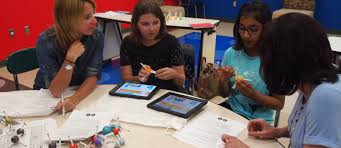Many schools (elementary, secondary and post-secondary) are including a MakerSpace in their square footage. People are reconfiguring spaces, libraries, learning commons, classrooms and basement rooms to include a MakerSpace. People are using grant money, parent council money, and other kinds of budgets to make this happen but I’m asking, does a makerspace have to be a space?
I mean it is nice if students have a dedicated space to do their making, designing and hands on learning but the space is not as crucial to making as the mindset.
Students and teachers may have a dedicated space to make with many fine kits and equipment but if the making is done as a “special” or unusual activity that must be booked and scheduled in, I feel students would not have the kind of making experience I envision.

Having a maker mindset that permeates a classroom with opportunities to try inventions and ideas out during the natural flow of learning creates an atmosphere where making is not a planned or scheduled event but an everyday occurrence.
The opportunity to embed this type of hands-on learning into each and every classroom suggests that the separate space idea may be just a short term measure to include making in schools. Teachers may move making directly into their classrooms as a way for students to express the outcomes of their learning in ways other than paper and pen or digital documents.
It’s great to have a MakerSpace but even better to have a maker mindset in every classroom for students who are tackling real world problems to be able to create many types of physical solutions as they continue to ponder solutions and learn original ways to problem solve creatively.



